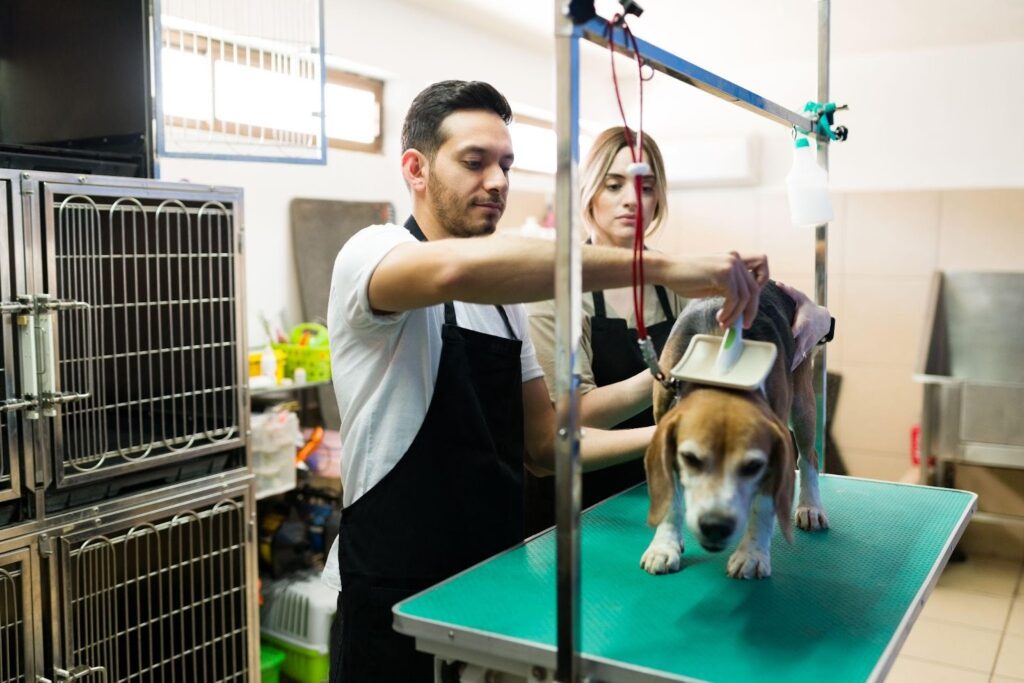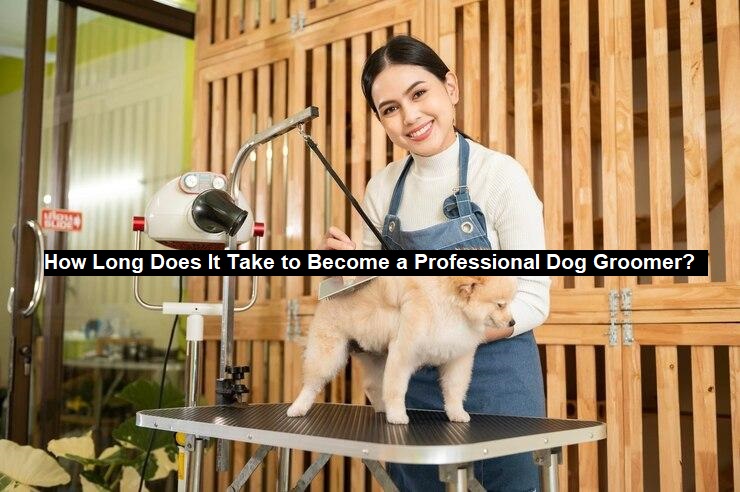Becoming a professional dog groomer is an exciting and rewarding career path for animal lovers. It offers the opportunity to work with different breeds of dogs, care for their grooming needs, and even contribute to their overall health and well-being. But how long does it really take to become a professional in this field? This article will guide you through the essential steps to becoming a professional dog groomer, providing insight into what the job involves and tips to fast-track your career.
What Does a Professional Dog Groomer Do?
A professional dog groomer does far more than just a quick wash and trim. They are responsible for the overall care of a dog’s coat, nails, ears, and skin, ensuring that the animal remains healthy, comfortable, and looking great. Groomers must have knowledge of different breeds, each of which may require specific techniques and tools related to pet care and hygiene.
Key tasks of a professional dog groomer include:
- Bathing and drying dogs
- Brushing and de-shedding fur
- Trimming nails and cleaning ears
- Styling hair according to breed standards
- Spotting skin or health issues
- Communicating with pet owners
Professional groomers also build trust with both dogs and owners. Strong communication and compassion are just as important as technical grooming skills. As pet ownership continues to rise, the demand for trained dog groomers is also increasing. Grooming offers a stable and satisfying career for animal lovers.
Read: How 7OH Tablets Can Help: Pain, Stress & Mental Health
Essential Steps to Becoming a Professional Dog Groomer

To become a skilled dog groomer, you must follow a few important steps. Each one contributes to building your knowledge, gaining experience, and earning industry credibility. Let’s break it down step-by-step.
Step 1: Education and Training
The first step in your grooming career is to gain the proper education and training. Although there is no strict educational requirement, most professional groomers complete a specialized grooming course. These courses typically last anywhere from a few weeks to several months, depending on the program’s intensity.
During your training, you’ll learn essential skills such as:
- Basic Grooming Techniques: You’ll be taught how to bathe, brush, and cut different coat types. This includes handling tools like clippers, scissors, and brushes.
- Breed-Specific Grooming: Some dog breeds have specific grooming needs, so understanding these requirements is crucial. You’ll learn how to tailor your grooming style for each breed.
- Safety and Health Standards: Knowing how to recognize skin issues, parasites, or infections is part of a groomer’s responsibility. Proper safety measures and sanitation practices are also emphasized to avoid cross-contamination between dogs.
- Customer Service: Since grooming is a service-based business, knowing how to interact with pet owners, understand their needs, and provide excellent service is essential.
While you can pursue grooming education through online courses, many aspiring groomers opt for in-person programs. These programs offer hands-on learning, which is a key factor in developing grooming skills.
Step 2: Hands-On Experience
Grooming is a skill that requires a lot of practice. After you’ve completed your training, you will need hands-on experience to perfect your craft. Many grooming schools or online dog grooming lessons will offer an internship or practical component as part of the program. This is where you get to work on real dogs under the supervision of a seasoned professional.
The length of this phase depends on your progress and the type of experience you’re seeking. You may need anywhere from 6 months to 1 year of practical experience. Working in grooming salons, shelters, or as an assistant to an experienced groomer is a great way to build your skill set. During this time, you’ll work with a variety of breeds and dog temperaments, refining your techniques and learning how to handle each dog safely and efficiently.
It’s important to remember that the more practice you get, the quicker you will gain confidence and speed. Becoming proficient in tasks like cutting different coat types or safely handling difficult dogs takes time, so don’t rush through this process.
Step 3: Certification and Licensing
Once you’ve gained sufficient experience, obtaining certification and licenses can help you stand out in the competitive dog grooming industry. While certification isn’t always legally required, it can provide many advantages.
There are various grooming certification programs available through organizations like the National Dog Groomers Association of America (NDGAA) or the International Professional Groomers (IPG). These certifications demonstrate that you meet high industry standards and have a comprehensive understanding of dog grooming.
Certification exams typically cover:
- Grooming techniques
- Animal care and welfare
- Professional conduct and business management
Some states may also require grooming licenses, especially if you plan to open your own salon or mobile grooming service. It’s important to check local regulations to ensure you comply with any necessary legal requirements.
Tips to Speed Up Your Dog Grooming Career

While the journey to becoming a professional dog groomer involves specific steps, there are ways you can accelerate your career:
Take Advanced Dog Grooming Lessons
After completing the basics, consider enrolling in specialized courses that focus on specific breeds or advanced techniques like creative grooming. This will enhance your skills and make you more marketable to clients.
Network with Other Professionals
Join dog grooming communities, both in-person and online, to connect with other professionals. Networking can lead to job opportunities, valuable advice, and mentorship.
Work in a Busy Grooming Salon
Getting exposure to a high volume of clients will help you gain experience quickly. A busy grooming salon provides ample opportunities to practice your skills and learn from others in the field.
Stay Up-to-Date with Industry Trends
The dog grooming industry is always evolving, with new products and trends emerging regularly. Stay informed about the latest grooming techniques, tools, and safety measures to enhance your credibility and effectiveness as a professional groomer.
Conclusion
Becoming a professional dog groomer is an exciting journey that requires a blend of education, hands-on experience, and grooming certification. While it typically takes around one to two years to become fully proficient, the timeline can vary depending on your commitment to training and experience. Whether you choose to take online dog grooming lessons or pursue formal in-person training, the key to success is consistency and practice. By following the steps outlined above and committing to continuous learning, you can embark on a fulfilling career in dog grooming that offers both personal satisfaction and professional growth.



